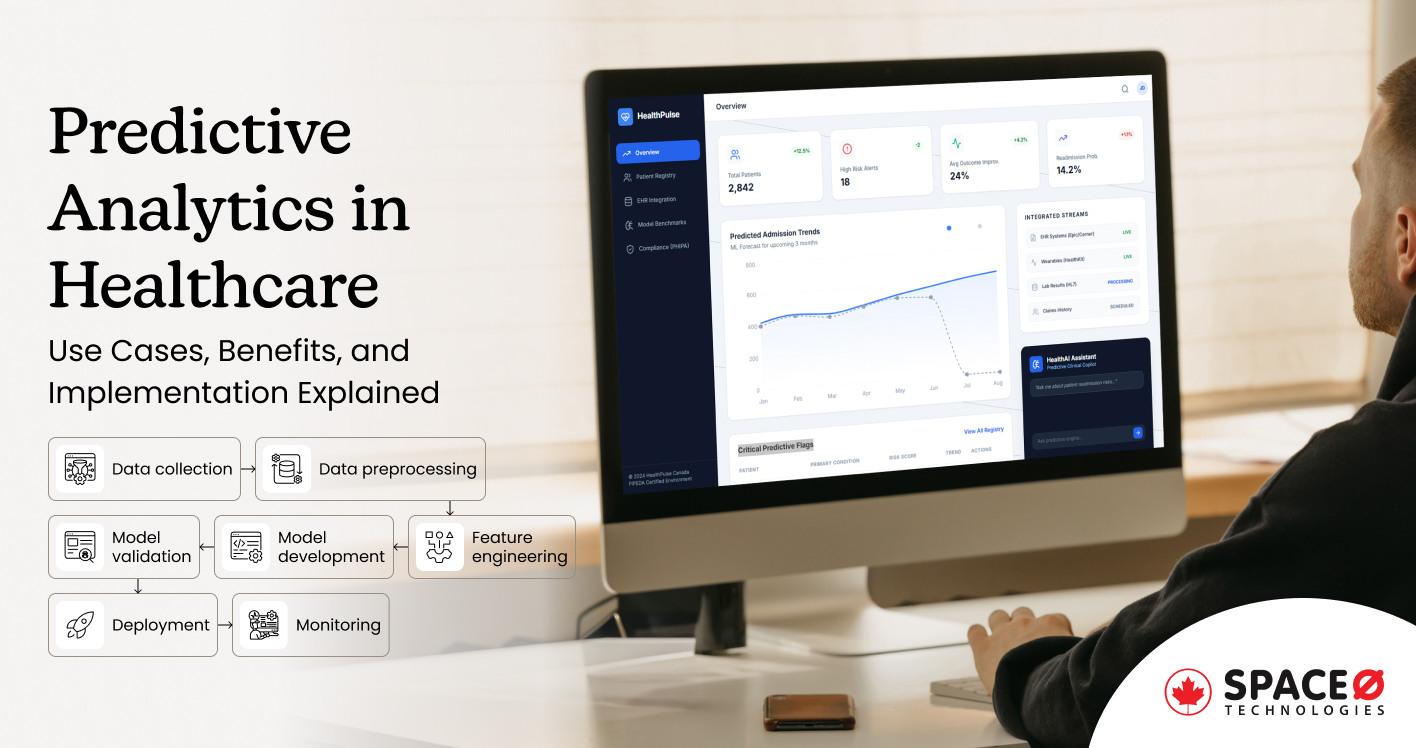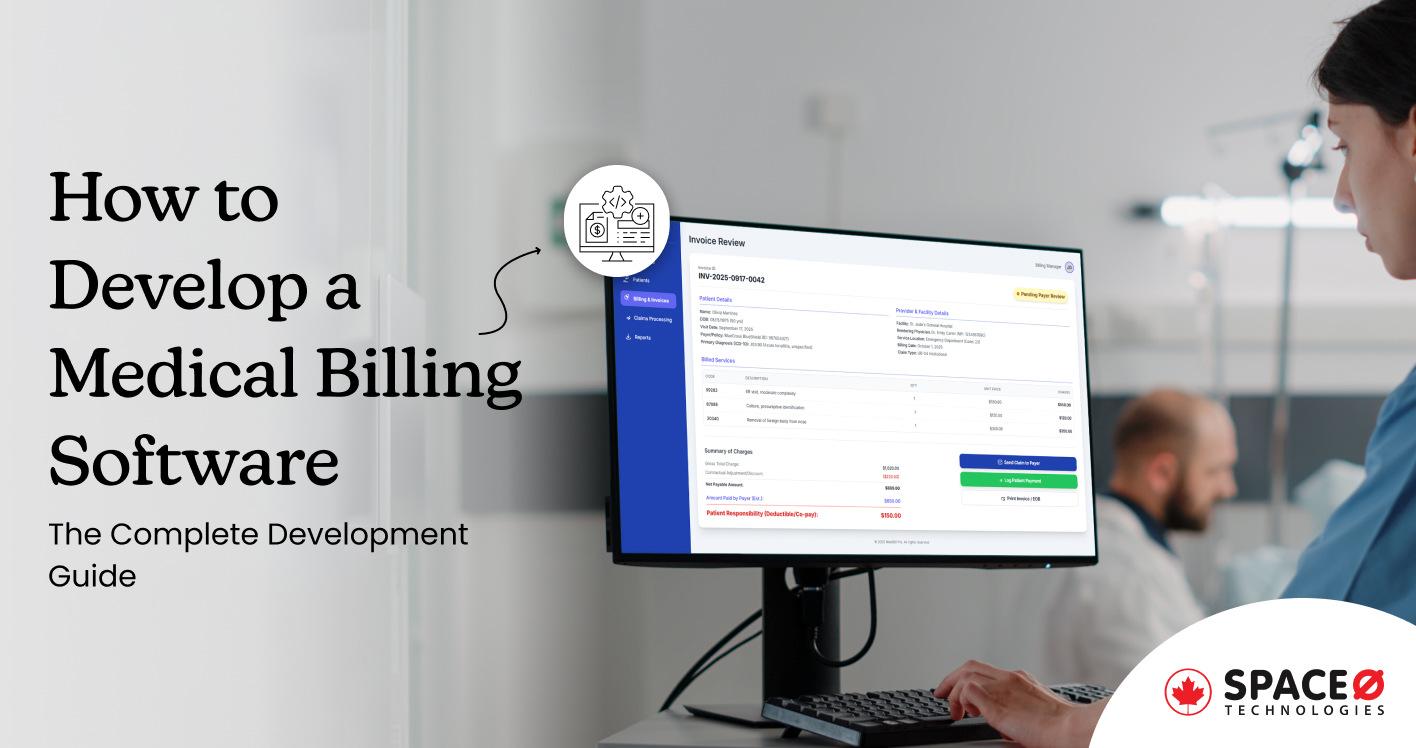
How to Create a Software Development Strategy [12 Key Steps]
When developing software solutions, there are three core aspects to take care of:
- Project requirements
- Development costs
- Project delivery timeline
This is where a custom software development company plays an important role. If you don’t have a clear software development strategy, there are chances of cost overruns and delays in software launch in the market.
In this blog post, we guide you to create a proper software development strategy that streamlines your processes and timely delivery of your software project.
Table of Contents
Why Do You Need a Software Development Strategy?
Creating software development strategies helps in multiple ways. Here are the reasons why you should have a software development strategy before proceeding with the development work.
- Ensures software reliability and performance through quality assurance standards, testing procedures, and benchmarks.
- Identifies risks early and mitigate them through planning, including technical challenges, changing requirements, and deadlines.
- Aligns software with business goals and objectives to deliver value.
- Plans for scalability regarding user load, features, and integration capabilities.
- Controls development costs by setting realistic budgets and timelines.
Next, let’s learn about the key steps that help to create a reliable software development strategy for your project.
12 Key Steps to Create a Software Development Strategy
Follow these core steps to design a software development strategy that is useful in your entire software-building process.
Define Your Business Goals and Objectives
To create a solid software development strategy, you should have a clear understanding of what are the goals and objectives of your organization. What the organization aims to achieve by developing a tailored software solution. Make sure that all the development efforts are aligned with your business requirements. Consider the following points before defining business objectives and goals.
- Define the purpose and desired outcomes of your software projects.
- Determine specific objectives for software development.
- Prioritize goals to focus development efforts.
- Identify the long term of your organization.
- Make sure your strategy align with your overall business strategy.
Having well-defined business goals and objectives serves as a guide throughout your software development strategy. As a result, your team focuses on what truly matters and prevents unnecessary issues.
Define a Clear Vision of Your Software Project
With a clear vision, you get a complete road to your software solution. A clear vision provides direction and purpose for your software development project. Here are the points to consider when defining a vision of your software.
- Describe the future state you aim to achieve.
- Inspire and align your team with a shared vision.
- Keep the vision concise and easy to understand.
- Make sure your vision statement reflects the values and ambition of your company.
When hiring software developers for your project, a well-defined vision statement helps to keep your team motivated and focused on a long-terms goals. This way, you avoid preventing distractions and encourage a sense of purpose.
Make Specific Objectives With (SMART)
Make sure your goals are specific, measurable, achievable, relevant, and time-bound. This way, you get clarity which helps you to track the progress of your software projects. Above all, learn if your goals are realistic and achievable within a decided timeline.
- Create specific objectives of your software.
- Ensure objectives are measurable.
- Confirm that objectives are achievable.
- Make sure objectives are relevant to your strategy.
- Set time-bound deadlines for achieving objectives.
SMART objectives provide a clear roadmap for your software development efforts, making it easier to measure success and stay on track. For example, instead of a vague objective like ‘improve customer satisfaction’, set a specific goal like ‘increase customer satisfaction ratings by 20% within the next 12 months.
Determine Your Development Approach
Choosing the right development methodology is important for your software development projects. A proper software development approach helps to know how your team collaborates, how your projects are managed, and how you adapt the changing requirements.
- Evaluate different software development methodologies.
- Select an approach that aligns with the nature of your software project.
- Define roles and responsibilities within your chosen methodology.
- Set communication and workflow processes.
- Prepare for flexibility in adapting to evolving project needs.
The chosen development approach sets the tone for how your teams will work together, ensuring efficiency and adaptability.
Resource Planning
Having the right resources, including software developments, tools, and technologies, is important for the successful completion of your project. Proper resource planning makes sure that your project development has all the aspects available.
- Identify the skills and expertise required for your projects.
- Assign a budget that covers development costs.
- Adopt the necessary tools, technologies, software, and hardware.
- Build a dedicated software development team with the right combination.
- Plan for resource scalability to meet project demands.
Proper resource planning minimizes roadblocks and ensures that your software development projects have the necessary support to proceed smoothly.
Risk Assessment and Mitigation
Identifying and addressing potential risks early in the software development process prevents large cost setbacks. Having a well-defined risk mitigation plan assures that you resolve challenges if any.
- Identify potential risks that could impact your software project.
- Evaluate the likelihood and severity of each risk.
- Develop mitigation strategies for high-priority risks.
- Assign responsibility for risk management.
- Continuously monitor and update your risk assessment.
A proactive approach to risk management safeguards your projects and minimizes disruptions, leading to smoother project execution.
Create a Roadmap
Having a roadmap helps you to get a reliable software development strategy. With the roadmap, you can outline key milestones and timelines, which helps you to plan, coordinate, and set expectations for all stakeholders.
- Prepare a proper timeline for your software development project.Determine the key milestones and deliverables of your software.Specify dependencies between different software development tasks.Share the roadmap with all relevant stakeholders.Continuously update the roadmap as project progress evolves.
A detailed software development project plan makes sure that your team is aligned on project timelines and priorities, promoting effective project planning and coordination.
Define Metrics and Key Performance Indicators (KPIs)
How do you ensure that your project development is in line and on time? This is where metrics and KPIs play an important role. With metrics and KPIs, you can measure the process and impact of your results of implementing software within your organization. In addition, you get valuable insights into project performance and help in decision-making.
- Identify relevant metrics and KPIs for your projects.
- Ensure that each KPI is tied to specific objectives.
- Establish a system for collecting and tracking data.
- Regularly analyze and interpret the data.
- Use insights to make informed decisions and adjustments.
Metrics and KPIs provide a quantifiable way to measure the success of your software development strategy and make data-driven improvements.
Communication and Collaboration
Effective communication and collaboration among team members and stakeholders are critical to ensure that everyone is aligned and working towards common objectives.
- Foster open and transparent communication.
- Establish regular team meetings and updates.
- Use collaboration tools and platforms.
- Encourage feedback and idea sharing.
- Ensure that all stakeholders are informed and involved.
Strong communication and collaboration create a cohesive and motivated team, ensuring that your software development strategy progresses smoothly.
Regular Review and Adaptation
Regularly reviewing and adapting your strategy allows you to stay agile and respond to changing circumstances, market conditions, and emerging opportunities.
- Schedule periodic strategy review sessions.
- Collect feedback from team members and stakeholders.
- Assess the strategy’s effectiveness and relevance.
- Identify areas for improvement and adjustment.
- Adapt the strategy to changing needs and goals.
Continuous review and adaptation ensure that your software development strategy remains dynamic and responsive to evolving challenges and opportunities.
Documentation and Knowledge Sharing
Proper documentation of your software development strategy helps to keep your team members in line with all the necessary details for your project. By creating a document, you maintain constant, consistent, and transparent development of your software.
- Note down all aspects of your strategy, including goals and processes.
- Create a centralized repository for your software documentation.
- Encourage the sharing of project knowledge among team members.
- Regularly update documentation as required.
- Ensure that new team members can easily access and understand the strategy.
Documentation and knowledge sharing facilitate consistency, knowledge transfer, and onboarding, making it easier for the team to execute the strategy effectively.
Continuous Improvement
Implementing a culture of continuous improvement enables improvement and ensures that your software development strategy remains relevant and effective over time.
- Encourage a mindset of continuous improvement.
- Collect and analyze feedback from stakeholders.
- Implement lessons learned from past projects.
- Seek opportunities for innovation and optimization.
- Regularly revisit and update your strategy.
Embracing continuous improvement keeps your strategy adaptive and ensures that your software development efforts evolve with the changing landscape.
Ready to Develop Your Software Solution?
Let’s talk. At Space-O Technologies, we have 7+ years of experience. Get end-to-end guidance from our consultants to develop a tailored software solution for your business.

Looking to Hire an Experienced Software Consultant?
Contact us to discuss your project challenges, goals, and objectives. Our software consultant guides you from ideation to the launch of your software project.
When Do You Need a Software Development Strategy?
Here are the conditions when you need an effective software development strategy to tackle multiple scenarios.
- Improve inefficient or outdated development processes
- Plan for long-term technological and market shifts
- Manage large, complex projects with multiple teams and technologies
- Define scope, goals, and timelines when initiating new software projects
- Align software projects with overall business objectives and budget
- Accommodate business growth by scaling software operations
FAQs About Software Development Strategy
Which software development methodologies are useful for project management?
Here are the core five software development methodologies that help to ease the entire software project development.
- Agile
- Scrum
- Kanban
- Waterfall
- DevOps
- Spiral
What are the core elements of a software development strategy?
The core elements of a reliable software development strategy are vision, mission, core values, goals, objectives, action plan, and SWOT analysis.
How to define a good software development strategy plan
A good software development strategy plan is defined by clear, achievable objectives aligned with business goals and a detailed approach, including budget management, timeline adherence, risk mitigation, and quality assurance.
Create a Solid Software Development Strategy
To create a software development strategy, you need to take care of goals, objectives, resource allocation, risk management, and continued improvement. Following these 12 key steps of building software strategy helps to organize, streamline, and timely delivery of your software.
Do you want to create a software solution for your business? Space-O Technologies is ready to help you with end-to-end software development. Contact us to create a plan for building software solutions from scratch.
Editor's Choice

Predictive Analytics in Healthcare: Use Cases, Benefits, and Implementation Explained

Telemedicine Software Development: A Complete Guide to Building Remote Healthcare Platforms

Medical Billing Software Development: The Complete Guide for Healthcare Providers
All our projects are secured by NDA
100% Secure. Zero Spam
*All your data will remain strictly confidential.
Trusted by


Bashar Anabtawi
Canada
“I was mostly happy with the high level of experience and professionalism of the various teams that worked on my project. Not only they clearly understood my exact technical requirements but even suggested better ways in doing them. The Communication tools that were used were excellent and easy. And finally and most importantly, the interaction, follow up and support from the top management was great. Space-O not delivered a high quality product but exceeded my expectations! I would definitely hire them again for future jobs!”

Canada Office
2 County Court Blvd., Suite 400,
Brampton, Ontario L6W 3W8
Phone: +1 (437) 488-7337
Email: sales@spaceo.ca

